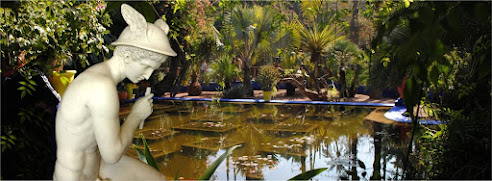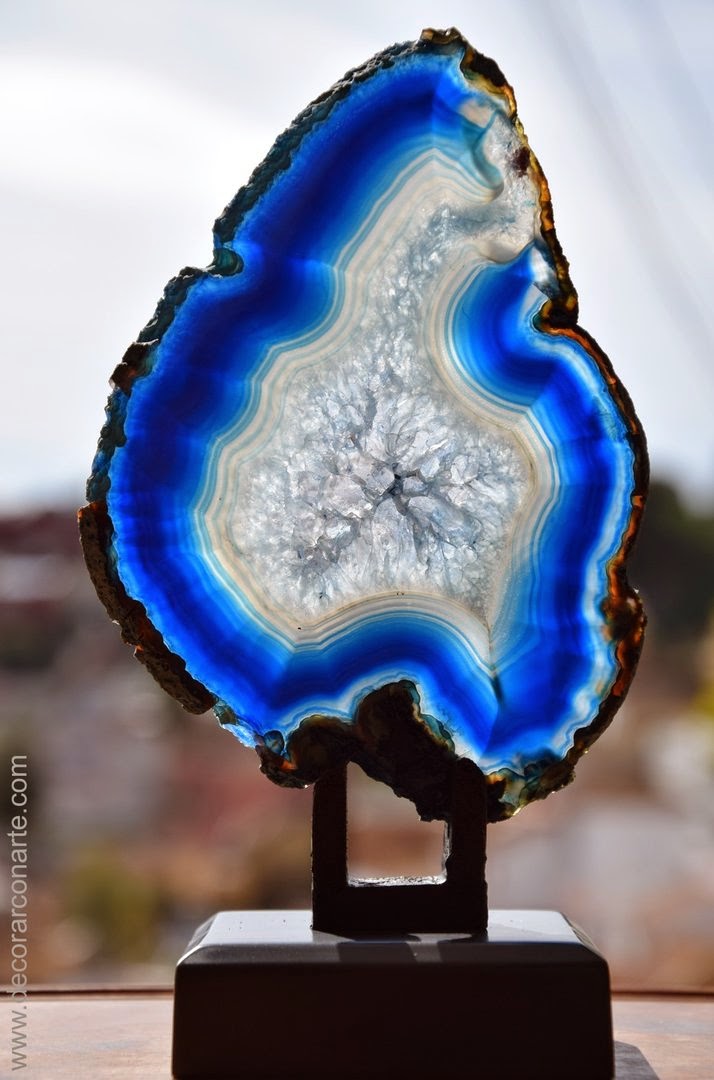Sculpture of Psyche revived by the kiss of Love
 |
| Figure of Cupid and Psyche. 60x70cm |
This is a reproduction of the sculpture by Antonio Canova, which is located in the Louvre Museum.
There was once a king and queen who had three daughters, of whom the youngest, named Psyche, was the most intelligent and beautiful. So many were his virtues that she inspired jealousy to Venus, the goddess of love and beauty, who decided to send his son Cupid to hurt her with one of his arrows, so that he fell in love the worst monster of the earth.
When he prepared to carry out the order, Cupid is accidentally pricked with one of his arrows and instantly fell madly in love with Psyche. So great was his passion that he decided to seek help from Apollo, the god of light and truth, to win her love, who wiped away all other suitors. The king, intrigued by this situation also calls for the advice of the god Apollo, who advised him to take her to the summit of a mountain, where a god will marry her.
Because it was not good to oppose the gods, and despite the pain of being separated from his daughter, the parents fulfilled the mandate. When Psyche was left alone, she wept inconsolably to sleep. When he awoke, he found himself lying on a carpet of fresh grass in the garden of a magnificent palace, and she heard a voice telling her that this palace was his and he could have everything he had.
Without knowing it she had become the beloved wife of Cupid, who would visit she only at night, to that Psyche could never see his face, because he wanted be loved as a man and not as a god. If ever his curiosity overcame her, both must be separated forever, because where love is should be no mistrust. But Psyche was bored during the day, and wanted that would come her sisters to visit her, a pray which her husband conceded her, even suspecting that it would not be a happy decision.
His sisters after seeing the happiness and the opulence in which lived Psyche, envied her and they decided devise a plan to ruin his life. Appealing to the fact that Psyche had never seen her husband, her sisters filled his head with doubts and misgivings, forcing her to uncover her face while she slept and carrying a knife for security.
That was how one night Psyche dared to illuminate the face of his husband with a lamp, being amazed by the grace and beauty of Cupid, who saw the light and woke up, who decided to leave, because she breached his condition. In his desperation, Psyche sought help to the gods, who told her that she would have to apologize to Venus, mother of Cupid, who he had unknowingly offended. Venus despised her, but gave her a try; she would have to spend three tough tests, which were more than impossible to realize, but Psyche managed to accomplish it with the help of the nature, which wanted to help her.
Venus accused her to witch; and desiring to defeat her, ordered her an even more difficult last test. She should go down to the underworld and fill a box with a part of the beauty of Proserpine, the goddess of life, death and resurrection and basis of a myth of the spring. Knowing it was impossible, Psyche decided to commit suicide by jumping from the top of a tower.
But before falling into the void he heard a voice that promised to guide her during his journey; but with the condition that once the box is filled with the beauty of Proserpine, she should never open it. Psyche did everything he advised the strange voice, but a strong desire of curiosity forced her to open the box. In the moment when she opened the box, a deadly dream came over her and she collapsed on the path as if struck by lightning.
Cupid, who had been searching her, has found her, able to return the dream in the box and then woke her up with a kiss. He lifted her gently and took flight, taking her with him to Mount Olympus, where Jupiter, god of the sky, joined them officially in marriage forever.
You can get the Figure of Cupid and Psyche here.



Comments
Post a Comment